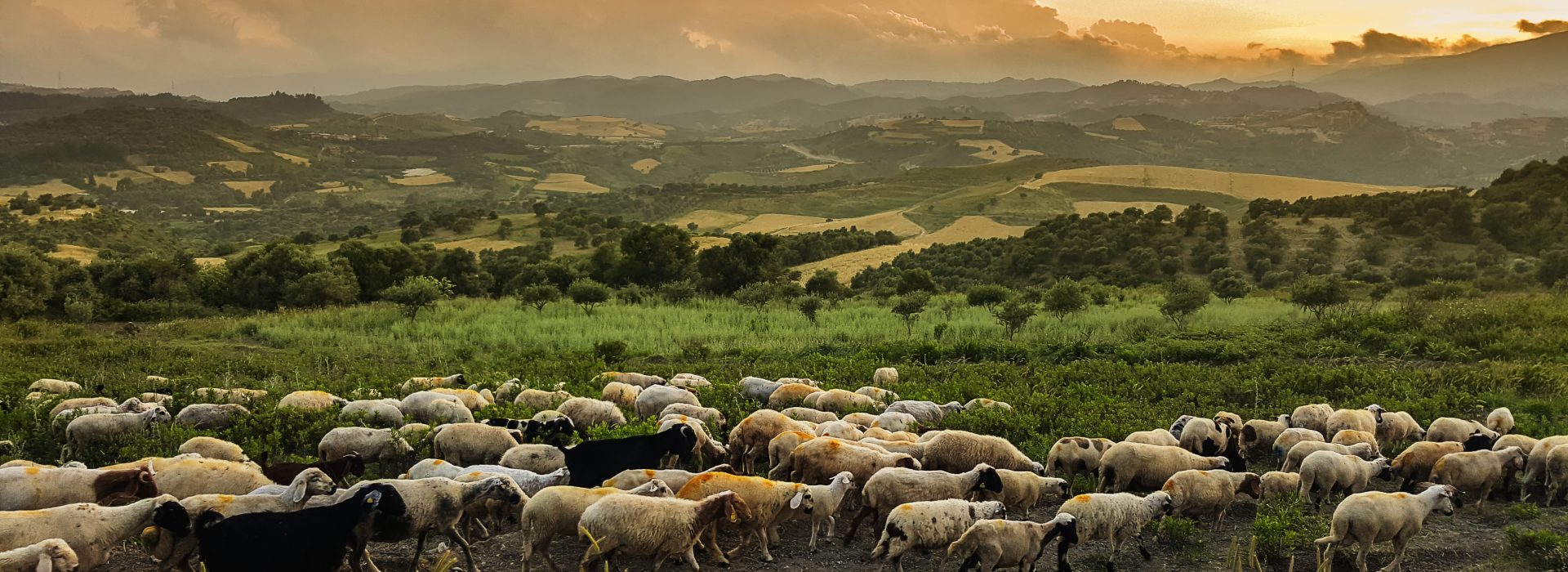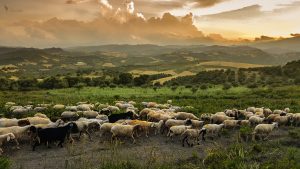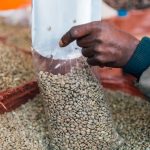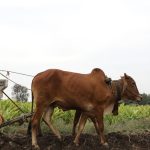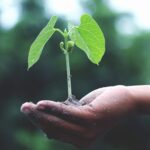In a riveting presentation at Harvard Law School, Allan Savory, a renowned ecologist, and visionary, shared his insights on the power of properly managing livestock to reverse desertification. The event, sponsored by the Harvard Food and Law Society, drew a crowd of 200, all eager to hear Savory’s unique perspective on the nature of humanity and the environment.
A Different Perspective on Agriculture
Savory’s journey to this point has been anything but ordinary. Born in Zimbabwe, he has worn many hats throughout his life, including those of a game rancher, ranger, and research biologist. However, his dissatisfaction with academic life led him to become an independent scientist, supporting himself through game ranching, farming, and international consulting. His experiences also took him through 20 years of war, a consequence of the poverty and violence that often accompany environmental degradation.
Despite the diverse roles he has played, Savory sees them all as interconnected, part of the same overarching problem. He believes that agriculture, the very foundation of civilization, is at the root of many of our global issues. From population growth and climate change to desertification and poverty, agriculture plays a significant role.
The Threat to Civilization
Historically, agriculture has led to the downfall of more than 20 civilizations, and now it threatens us on a global scale. The figures are alarming. We are losing approximately 10 tons of eroded soil for every human alive today, while we only need about half a ton of food to maintain a human in a healthy condition for a year. This imbalance is leading us towards an unsustainable future.
Moreover, agriculture is contributing to global desertification, increasing the frequency and severity of floods, even without any change in weather patterns.
The Role of Agriculture in Climate Change and Social Breakdown
Savory argues that agriculture is not only causing environmental degradation but also contributing significantly to climate change. While the focus is often on fossil fuels, agriculture may be contributing just as much, if not more, to the changing climate. Even if we develop benign forms of energy, which is a necessity, climate change will continue due to the impact of agriculture.
This issue goes beyond environmental concerns. The degradation of our agricultural lands leads to poverty, social breakdown, and violence. It forces people to emigrate, often risking their lives in the process. The wars we are fighting over water resources are a direct consequence of this degradation.
The Power of Tools and Technology
As a tool-using species, humans have developed a wide range of technologies, from simple sticks and stones to complex machinery and digital devices. However, Savory points out that for most of human existence, we had only two tools: technology and fire. It was the discovery of fire that allowed us to progress from the Stone Age to the Iron Age and beyond, enabling us to develop everything from the clothes we wear to the devices we use every day.
The only other tool we have developed is the concept of resting the land, a practice likely originating from crop farmers moving their crops or pastoralists moving their livestock. This, along with the use of small living organisms to make products like cheese and wine, constitutes the extent of our toolset.
The Misunderstanding of Livestock’s Role
Savory challenges the common belief that livestock is the primary cause of desertification. While it’s true that the earliest agricultural civilizations that failed were often blamed on livestock, Savory argues that this is an oversimplification. Just as we were once certain that the world was flat, we may be wrong about the role of livestock in environmental degradation.
The real issue, according to Savory, is the loss of biodiversity. Desertification, he explains, is a symptom of this loss. It occurs when biodiversity decreases, particularly in environments with seasonal rainfall, which constitutes most of the world’s land. This is our Achilles heel.
Understanding Desertification and Effective Rainfall
Desertification is a symptom of biodiversity loss. It occurs when the dead plant material and litter that cover the soil begin to decrease, making the rainfall less effective. This is not a concept taught in universities, yet it is a simple and crucial understanding.
To illustrate this, Savory uses the example of the Tehama desert. When an inch of rain fell on the desert, equivalent to about 1200 drums of water per hectare, it seemed like a significant amount of water. However, the next day, the land looked as dry as before. The water had either run off, contributing to flash floods, or soaked into the soil and evaporated. This is what Savory refers to as non-effective rainfall.
For rainfall to be effective, it needs to penetrate the soil and only leave in one of two ways: either transpired through plants or flowing through the soil to permanent river flow, aquifers, and springs.
The Role of Grasslands
Most of the areas prone to desertification are grasslands. These grasslands provide the bulk of the ground cover and are the stability of the land. When the rain stops, the grass above ground, except for the crown of the plant, dies. This dead material needs to decay biologically before the next rains. If it doesn’t, the grassland starts to die, leading to desertification and non-effective rainfall.
If the dead material is left to decay naturally, it shifts to a chemical process of oxidation, which is gradual but blocks the sunlight that should reach the growth points of the plants. This causes the plants to prematurely kill themselves, leading to bare ground and desertification.
Traditionally, people have burnt the grasslands to prevent this oxidation. However, this is a rapid form of chemical oxidation that pollutes the environment and leaves the soil bare, making the rainfall non-effective.
The Impact of Livestock
Savory was shocked to see desertification in national parks in the United States, where there had been no livestock. This led him to question the widely accepted belief that livestock is the primary cause of desertification. He began looking at experimental plots all over the western United States, which were put in place when the government wanted to reduce the number of sheep in the Navajo region.
The Limitations of Technology
Given our limited tools, Savory questions if there is any technology, even imaginable, that could restore biological decay to billions of tons of vegetation over billions of hectares every year. The answer seems to be a resounding no. Despite this, attempts have been made to use technology to address the issue, often with unintended consequences.
For example, in the Negev desert, the Israeli government has been implementing earthworks to harvest non-effective rainfall to grow trees, a process costing 10,000 euros per hectare. However, this method, which was used over 2,000 years ago by the Nabataeans, didn’t work then and is unlikely to work now.
The Role of Herding Animals
What we have missed, according to Savory, is the role of herding animals in these environments. The soil, vegetation, and animals all co-developed over millennia, forming an indivisible whole. These animals breed continuously, with their numbers regulated by disease, accident, and predation.
When subjected to high levels of predation, these animals form large herds for protection. As they graze, they dung and urinate on the ground, which forces them to keep moving to avoid feeding on their own feces. This movement, induced by predation, prevents the overgrazing of plants.
Savory points out that overgrazing, which is often attributed to too many animals, has nothing to do with animal numbers. Instead, it’s all about the time the animals spend in one place and when they return. This understanding challenges the common belief held by environmental and farming organizations.
The Holistic Framework
In developing a holistic framework to address these issues, Savory suggests making all decisions socially, environmentally, and economically sound, using all available science and sources of information. However, due to the complexity of nature, he advises automatically assuming that any decision, no matter how much it is supported by research, is wrong.
The Unthinkable Solution: Using Livestock to Mimic Nature
Savory proposes an unthinkable solution: using livestock to mimic nature. This, he believes, is the only way to reverse global desertification and address climate change. The challenge, however, is how to do it. For thousands of years, pastoralists have bunched and moved their animals, leading to desertification. Modern range science and rotational grazing have only accelerated the process.
In his search for a solution, Savory turned to the military, which had developed planning techniques for immediate battlefield conditions. These techniques involved breaking down complex situations into small, digestible bits, allowing for the best possible plan at any given point in time.
However, these techniques didn’t account for planning months or years ahead, or for dealing with animal behavior and vegetation volumes. To address this, Savory developed a holistic planned grazing method, which involves planning the movements of animals on a chart to mimic nature. This simple method, which can be taught to a child in one and a half hours, has been successful in reversing desertification.
Addressing the Controversial Issues
Savory acknowledges the controversial issues surrounding his solution, such as the consumption of meat, the methane emissions from cattle, and the ability of grasslands to store carbon. However, he argues that these are academic issues. Even if we decided not to eat meat, or if cattle emitted 10 to 20 times the methane they currently do, or if grassland soils couldn’t absorb any excess carbon, we would still have no option but to address desertification.
Savory concludes by emphasizing the urgency of the situation. Every year spent debating these issues is a year lost in the fight against desertification and climate change.
The Practical Application of Holistic Planned Grazing
Savory’s holistic planned grazing method is already being implemented on approximately 40 million acres across five continents. The method involves increasing the livestock four hundred percent, planning their grazing, and integrating them with the wildlife. Even in the driest years, the land has produced more grass than ever before.
In Zimbabwe, Savory and his team are currently trying to double the number of cattle again to keep pace with the production of the land. They simply don’t have enough animals, including wildlife, to get the grass down, cover the soil, and allow it to decay. Savory envisions this method being implemented worldwide, leading to a very different world.

